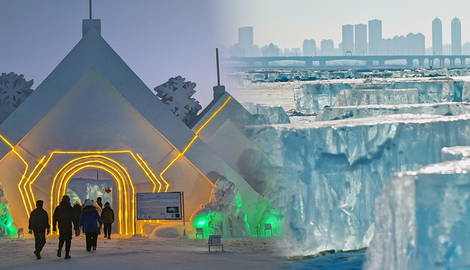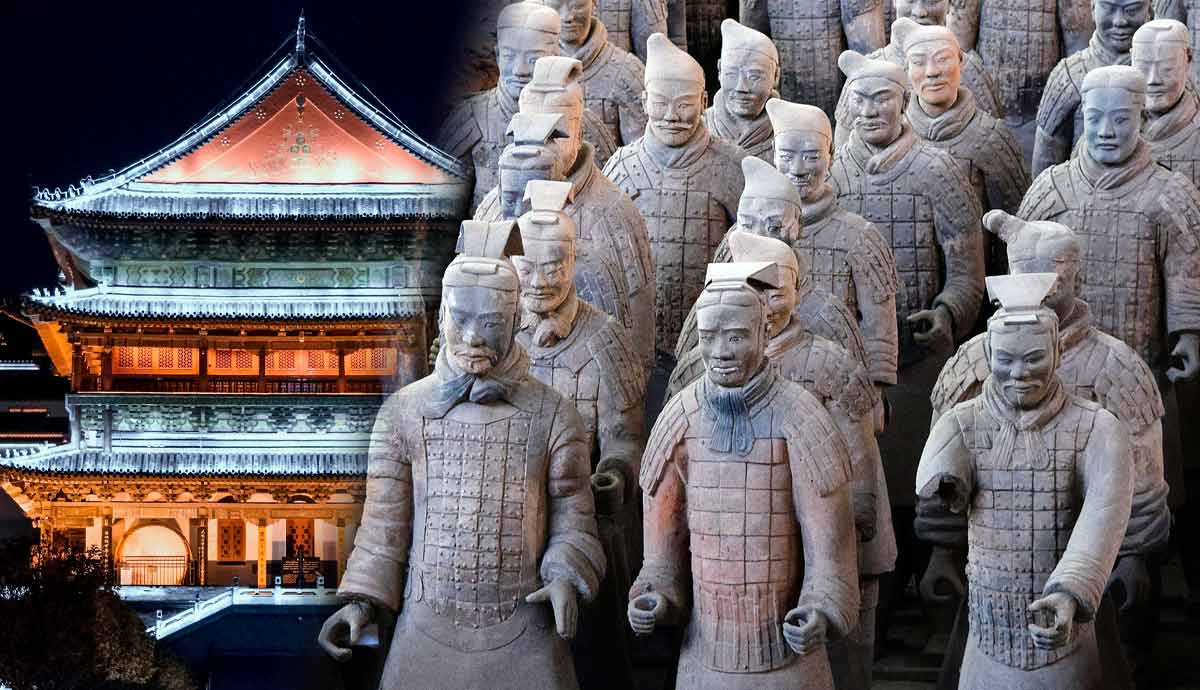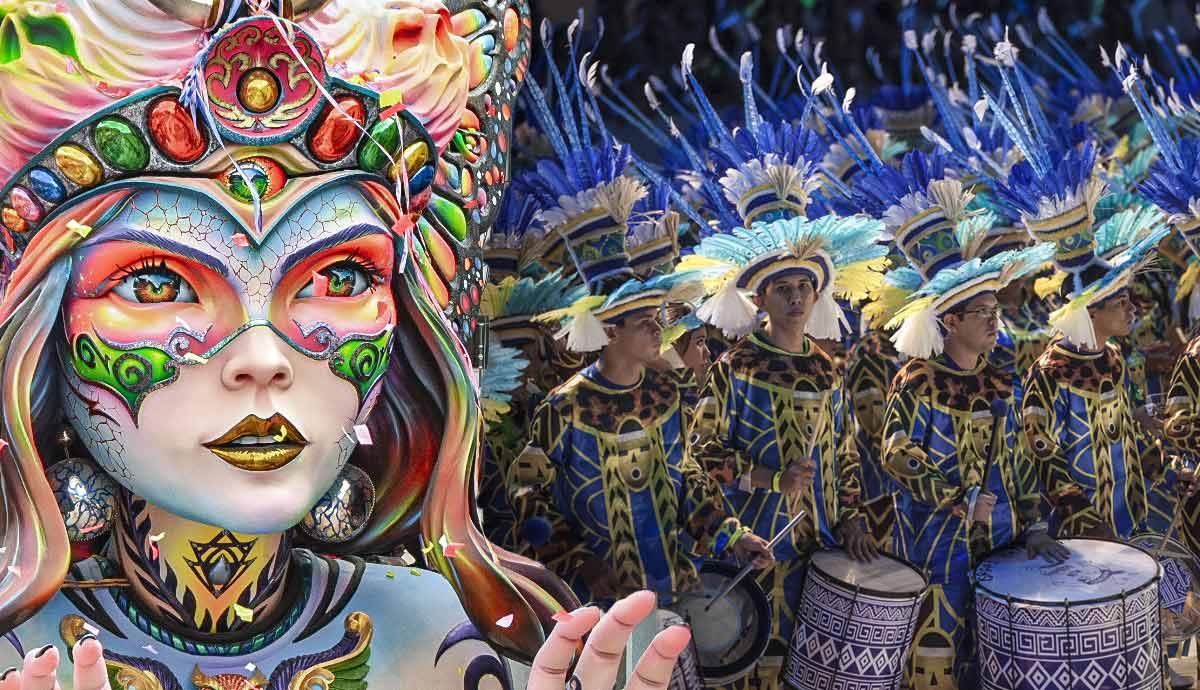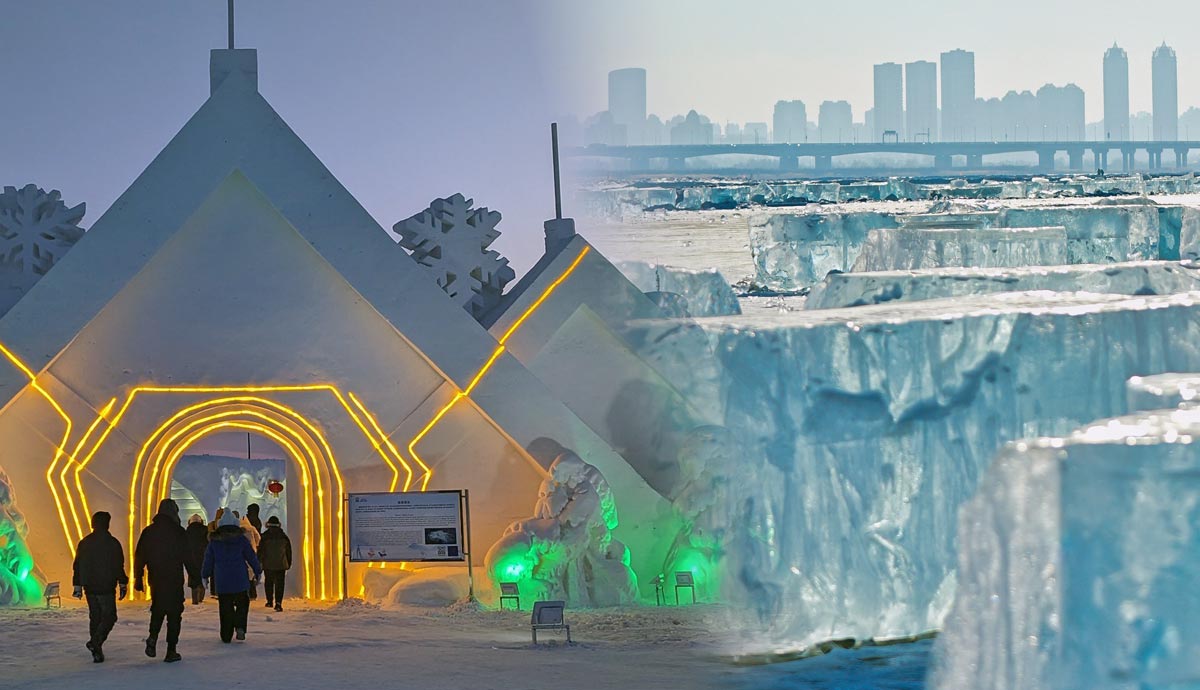
Though home to over 10 million people, Harbin remains relatively unknown. Settled around 2200 BCE, Harbin was selected by Russia as the base for its Chinese extension of the Trans-Siberian Railway. Harbin became a bustling city full of Russians, Jews, Ukrainians, and Poles, among others.
Harbin was Russia’s base during the Russo-Japanese War (1904-05), and afterward, thousands of people from different countries moved there to establish consulates. The Japanese invaded and controlled it from 1931 to 1945 when the Soviet Army returned. Nowadays, Harbin has several exciting attractions for visitors.
1. Saint Sophia Cathedral
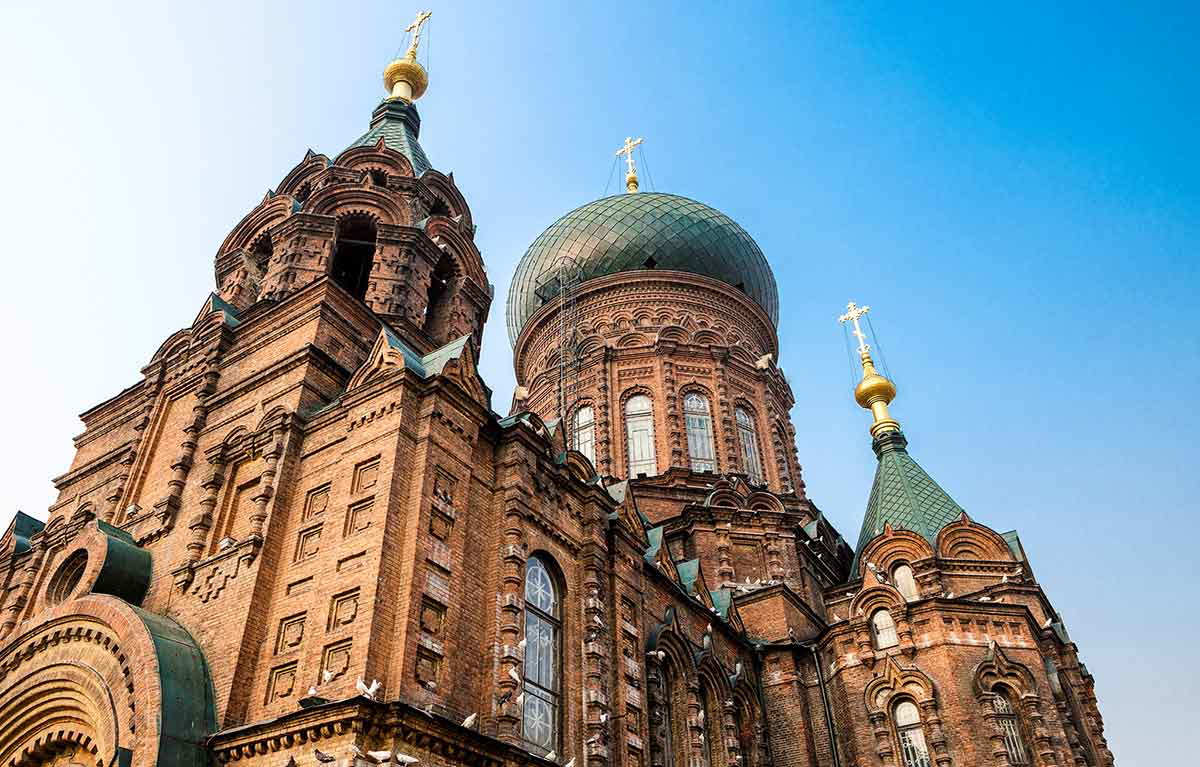
Saint Sophia Cathedral, known formally as the Cathedral of the Holy Wisdom of God, is a former Russian Orthodox church in downtown Harbin. The church dates back to 1907, just after the completion of the Trans-Siberian Railway in 1903. This railway connected Vladivostok, a city in eastern Russia, to northeast China, bringing an influx of Russians to the region, then known as Manchuria. The church was built using timber in a Russian Revival style, inspired by the Christ the Savior Cathedral in Birky, Ukraine. Over time, Harbin’s population climbed, and by 1921, there were 300,000 people, including 100,000 Russians. The church was renovated and expanded between 1923 and 1932.
Today, Saint Sophia Cathedral is the largest Orthodox church in the Far East. It is 175 feet tall and sits in the middle of a large city square. The cathedral has a large green dome and is built in the shape of a cross.
When the People’s Republic of China (PRC) was established in 1949, all Christian missionary work was terminated, and Russian churches were turned over to Chinese control. The cathedral was closed during the ensuing Great Leap Forward (1958-1961) and Cultural Revolution (1966-1976). It survived being destroyed, but it was used as a warehouse and fell into disrepair. At one point, concrete high-rises were put up on all sides of the church. People passing by on the streets could neither see it nor access it.
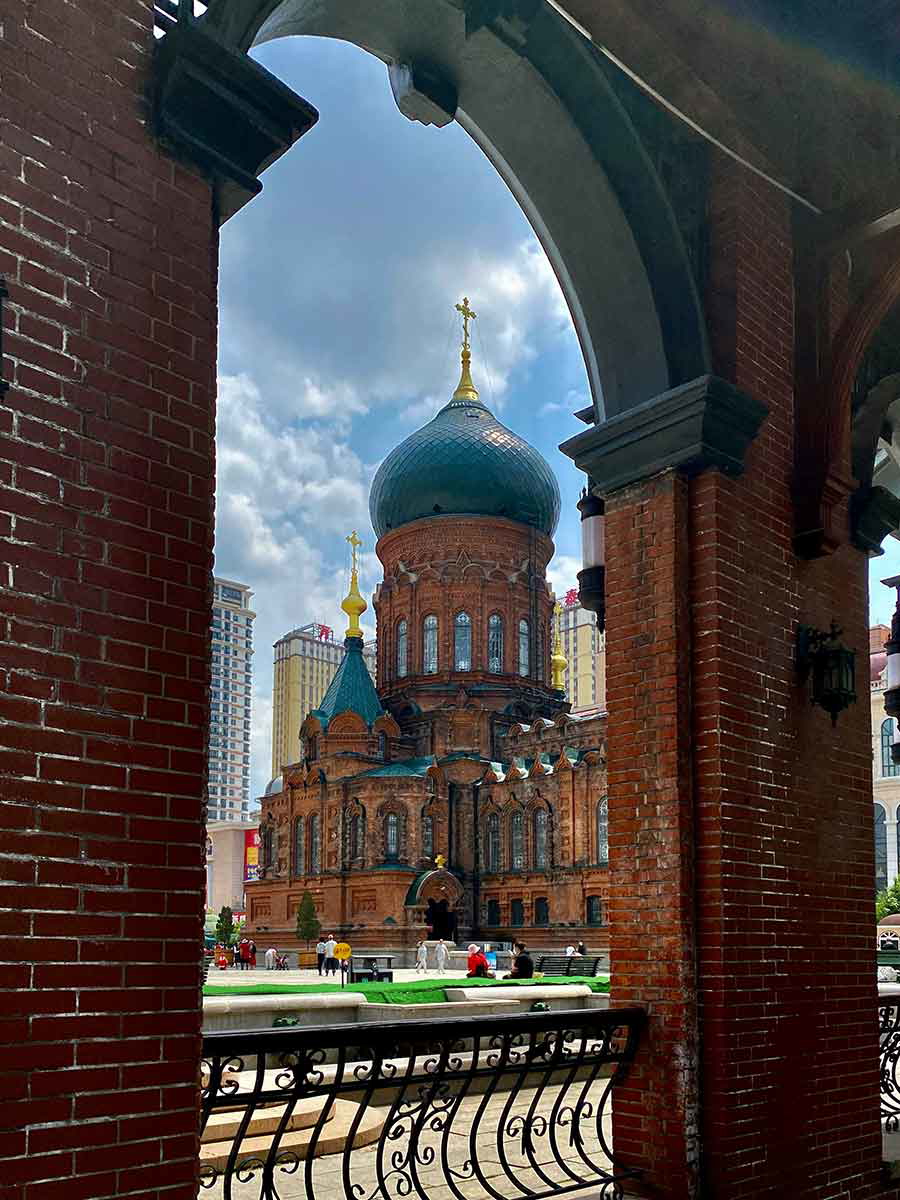
The cathedral remained hidden for decades until it was designated a national cultural heritage site in 1996. After an article was published, donations poured in from local corporations, businesses, and citizens to both restore the cathedral and renovate the square. Approximately US$1.5 million was gathered, and in 1997, the buildings that surrounded Saint Sophia were destroyed. Later that year, the cathedral was converted into a museum where visitors can view historic photos of Harbin.
2. Harbin Ice and Snow World
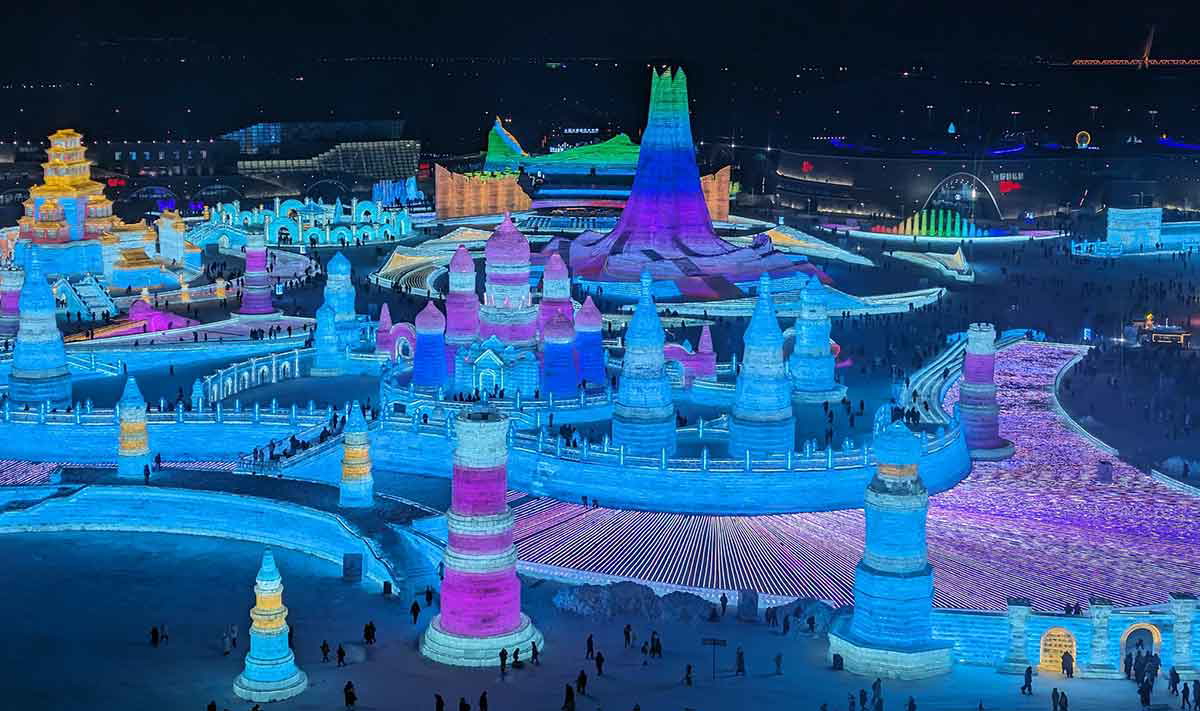
Though not a famous city worldwide, Harbin is famous in China for hosting the world’s largest ice and snow festival. Organized by the Harbin Municipal Government, the festival began as a local event with Chinese participants. It dates back to 1963 when it was an ice lantern show but it was stopped for many years due to the Cultural Revolution. It began again in 1985 and has expanded over the years to become an international event.
Ice and snow sculptures are constructed around the city for the duration of the festival, which lasts from late December to late February. Most of the sculptures are found in two main areas — Sun Island and Ice and Snow World.
Ice and Snow World is a park that opened in 1999, and the sculptures it displays are rebuilt each year. The ice used to construct the sculptures is taken in blocks from the Songhua River, which flows through the city. Sculptors use swing saws to remove the ice and then shape it using chisels, picks, and several other types of saws. Many of the ice sculptures are incredibly intricate, and deionized water is used in cases where the sculptor requires perfectly clear ice for their work.
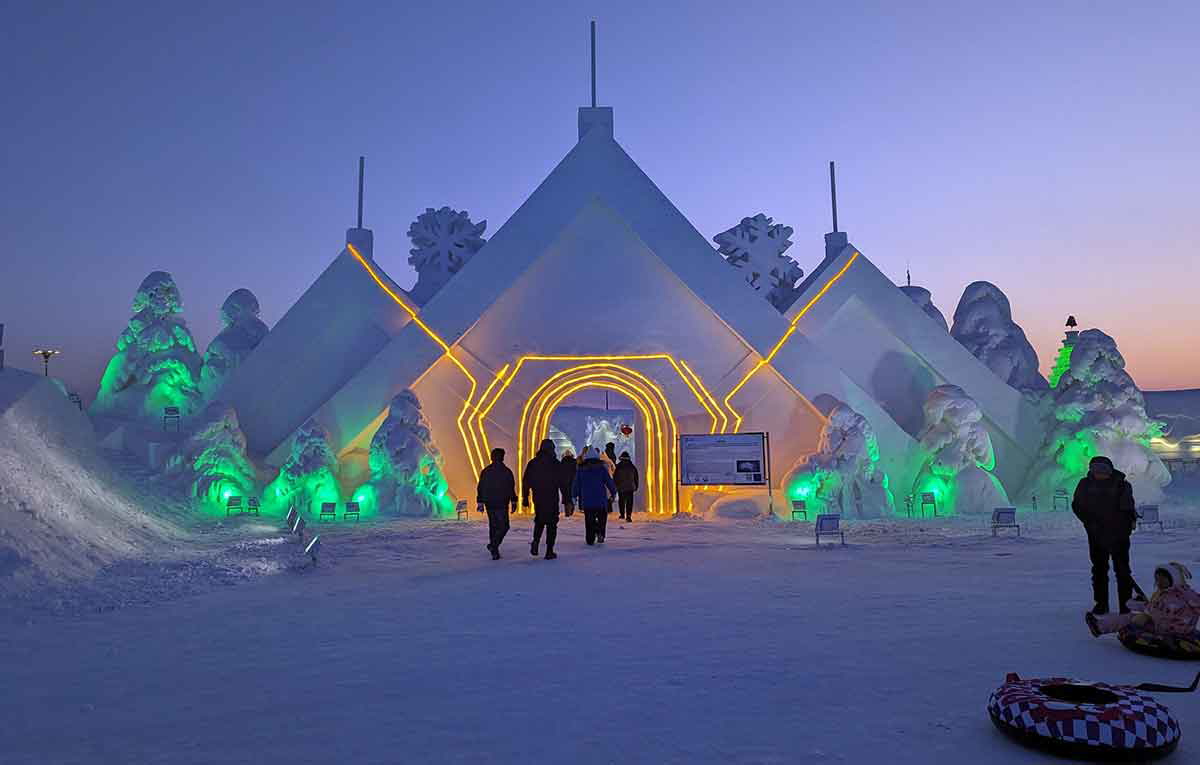
The sculptures on display range from replicas of buildings and temples to ice versions of the Great Wall, to figures of animals, mythical creatures, and important historical figures. The festival brings in a lot of visitors — on its opening day in 2023, over 40,000 people showed up. Over the New Year holiday at the start of 2024, there were nearly 163,200 visitors.
Harbin also has many other winter activities available, including skiing at the Yabuli resort. In July 2024, the Harbin Indoor Ice and Snow Theme Park opened. This venue was designated the “world’s largest indoor snow and ice theme park” by Guinness World Records. The venue is kept at a chilly 17.6 F to 10.4 F, and just as with the festival, all ice used comes from the Songhua River.
3. Zhongyang Dajie (Central Street)
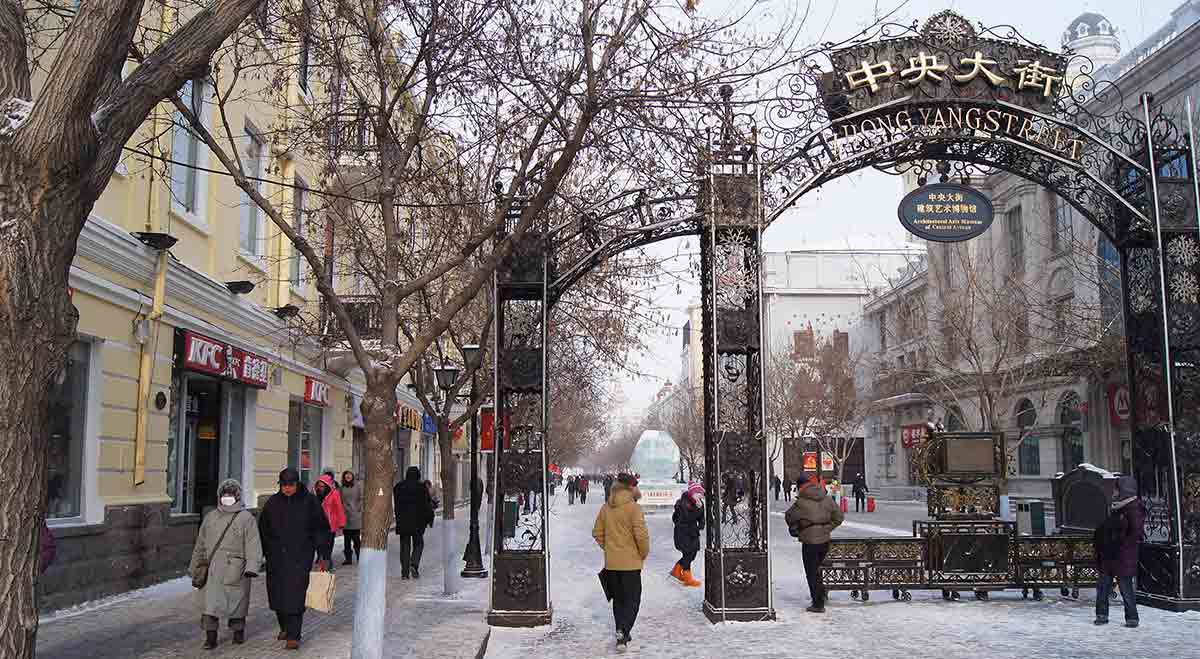
Construction on Zhongyang Dajie, originally called “Chinese Street,” began in 1898. The street went by this name until the late 1920s. The street was originally used by carts transporting railway supplies through the city, but it became a destination after it was paved with stones. In the years that followed, Russian builders opened hotels, shops, and bars along the street. In addition to that, vendors sold goods from around the world, creating a cosmopolitan atmosphere. The street at that time was mainly inhabited by Russians, Jews, Japanese, and Chinese.
What makes this street so unique today is that it features entirely European architecture, with a total of 71 European-style buildings. The Jaioyu Bookstore, for instance, is Harbin’s best example of Baroque architecture. The Daoliqiulin Shop and the Mod-Er Hotel, on the other hand, feature the Art Nouveau style. There are also buildings in the Renaissance style.
In 1986, it was announced that the street would be preserved by the municipal government. In 1997, the street was converted to a pedestrian street. Today, Zhongyang Dajie is Asia’s longest pedestrian street, stretching for almost a mile.
4. Lao Daowai-Chinese Baroque Street
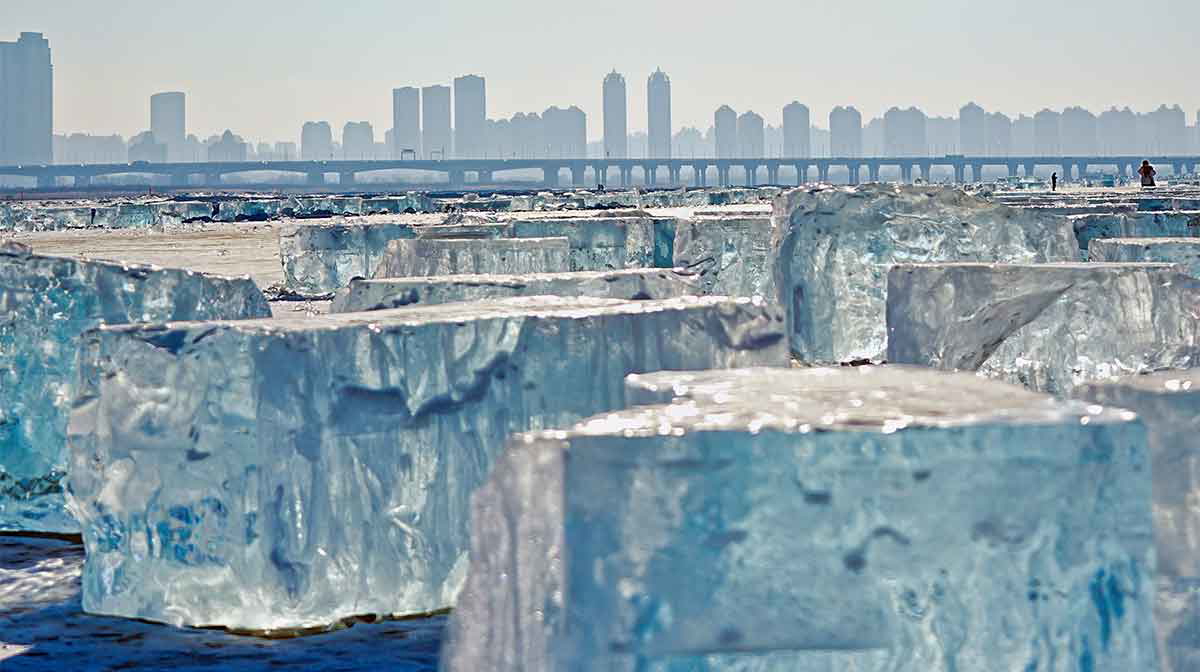
Lao Daowai, known in English as Chinese Baroque Street, is a neighborhood in Harbin. What makes this street special is its history — it is considered to be where the city of Harbin began. The street contains buildings that feature both Baroque facades and traditional Chinese courtyards, called Siheyuan.
During the first half of the 20th century, the city of Harbin was split into two separate areas. Russian, Jewish, and Polish people lived in the eastern part (which is now home to the Daoli and Nangang districts), and Chinese people lived in the western part (now known as Daowai). Architecture was built in a number of styles around the city. Interestingly, even the Chinese built structures in the European style but they made use of Chinese methods to do so. This is how Lao Daowai came to have buildings that feature Chinese courtyards with European facades.
Despite the historical value of Lao Daowai, it didn’t become a tourist destination until the neighborhood was refurbished in 2010 and opened to tourists in 2014. Today, the site is a great place for tourists to enjoy architecture and try local foods, and it is also a popular site for filming TV shows and movies.
5. Unit 731 Museum
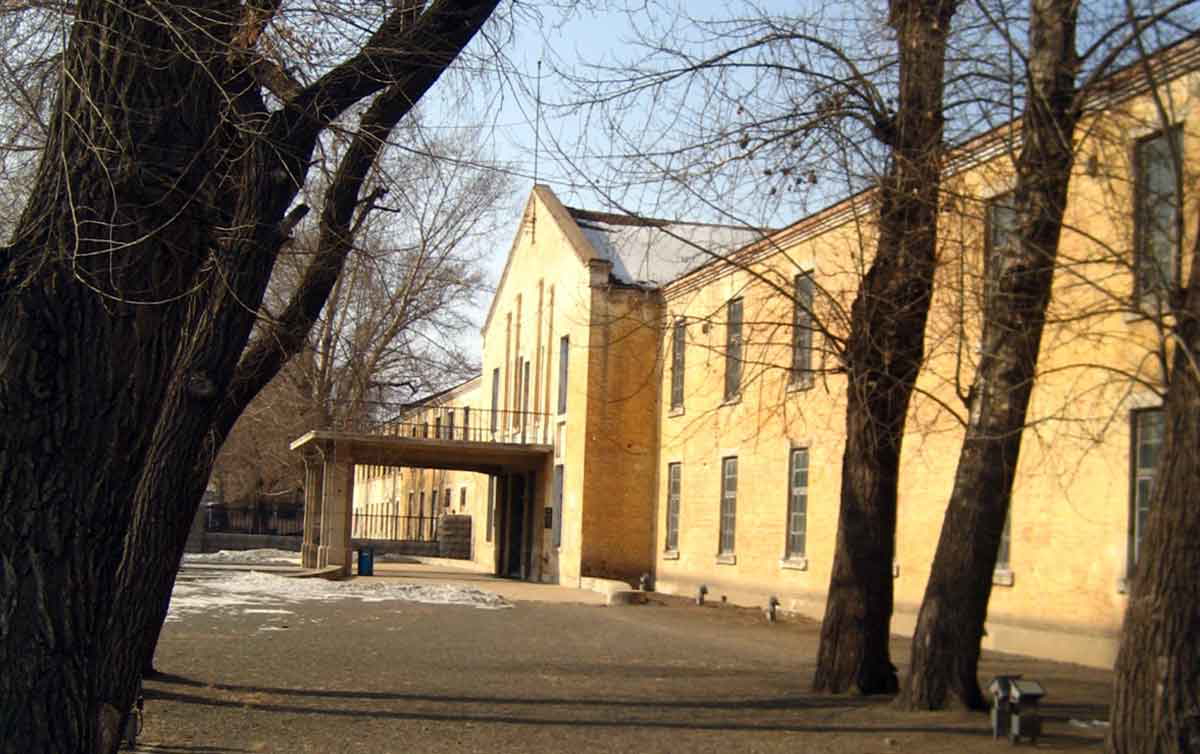
Most people are familiar with German-run World War II-era concentration camps such as Auschwitz and Dachau, but few are familiar with similar camps run by the Japanese throughout Asia. Unit 731, located in Pingfang district, Harbin, is a former Japanese Germ Warfare Experimental Base. The site was used for chemical and biological warfare research and development during the Second Sino-Japanese War (1937-1945). At Unit 731, the Japanese engaged in horrific experimentation on Chinese civilians from the area, with the total number of victims estimated at 14,000 with no survivors. When the number of deaths caused by infectious diseases purposely spread in other towns and cities in the region is considered, the death toll could be as high as half a million.
Prisoners at the camp were referred to simply as “logs,” and they were subject to testing rivaling that done by Nazi doctors in German camps. The majority of victims in the camp were Chinese, though there were also Russian prisoners. At its height, the camp had 3,000 staff members and 150 buildings. The camp was run by General Shiro Ishii, who was a combat medical officer. When the camp fell, Ishii was not held accountable for his role, but rather, was offered immunity by the United States in exchange for the records of all of the experiments that had been conducted at Unit 731.
In 2002, the Tokyo District Court determined that Japan was responsible for having committed biological warfare in China. Other similar units were identified in Beijing, Nanjing, Guangzhou, and even Singapore, employing over 10,000 people. Today, the former camp houses a museum that is not for the faint of heart, as it features descriptions and gruesome images of what happened at Unit 731 while it was active.
6. Temple of Bliss (Jile Si)
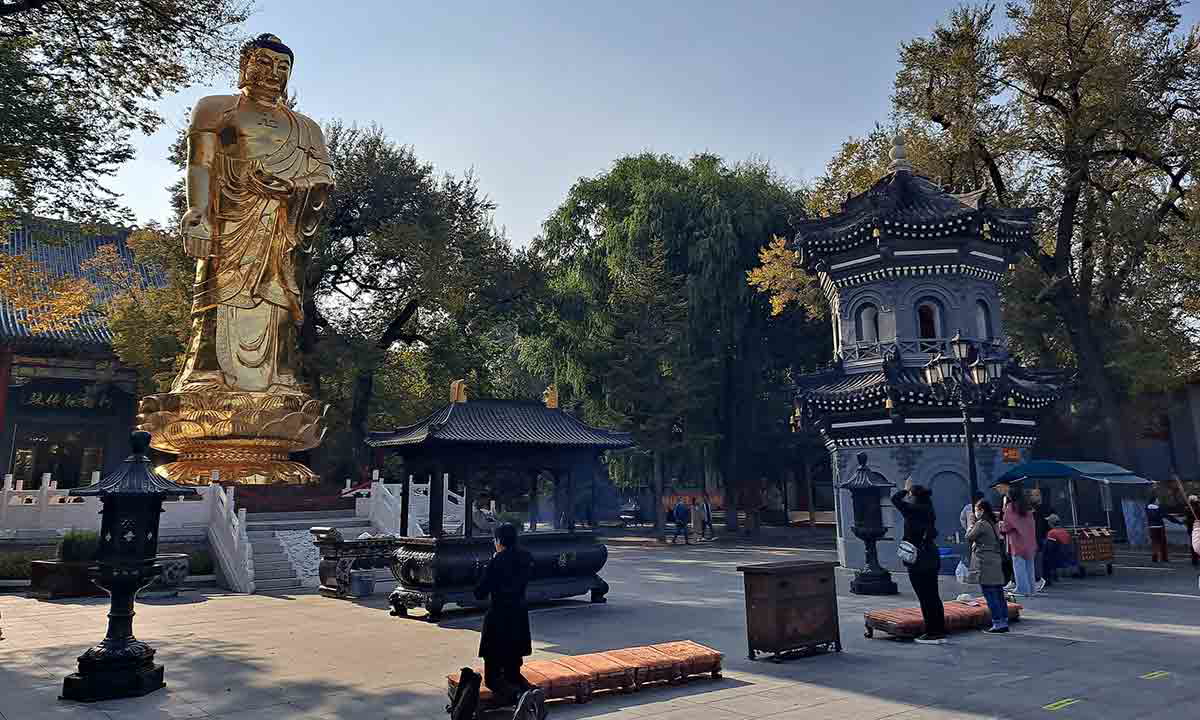
The Temple of Bliss, built between 1921 and 1924, is known in Chinese as Jile Si. It is a Buddhist temple in Harbin’s Nangang District and the largest Buddhist complex in Heilongjiang province. Jile Si is one of four famous Buddhist temples in China’s northeast, with the other three being in the cities of Changchun, Shenyang, and Yingkou. The full temple covers nearly 580,000 square feet, with around 56,000 square feet covered by buildings. Within the temple you can visit several halls, a Bell Tower and Drum Tower, and monks’ quarters. Most impressive, however, is the 98-foot-tall seven-story pagoda that stands on the temple grounds.
The temple is also home to impressive bronze statues of numerous Buddhas and is built in traditional Chinese style, with blue bricks and glazed roof tiles. The entrance, called The Mountain Gate, was constructed to resemble the Chinese character for “mountain,” — “山” (Shan).
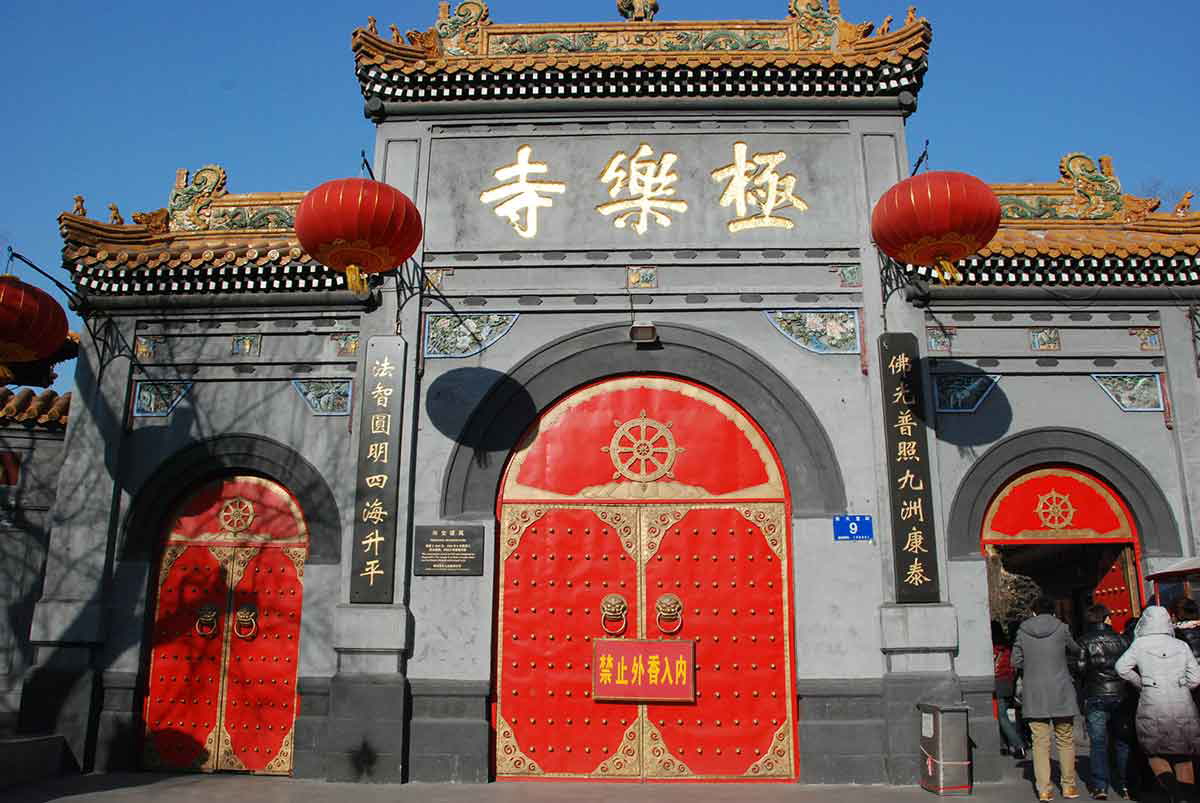
The site is open to visitors and has been listed as a key historical site by the Heilongjiang government. Each year, during the Chinese Lunar New Year, there is a temple fair at the site. Activities at temple fairs usually include performances of Chinese opera, acrobatics, magic, or puppet shows. Musicians play traditional music, local foods are served, and there are often games for visitors to play to win prizes.
7. The Soviet Red Army Monument
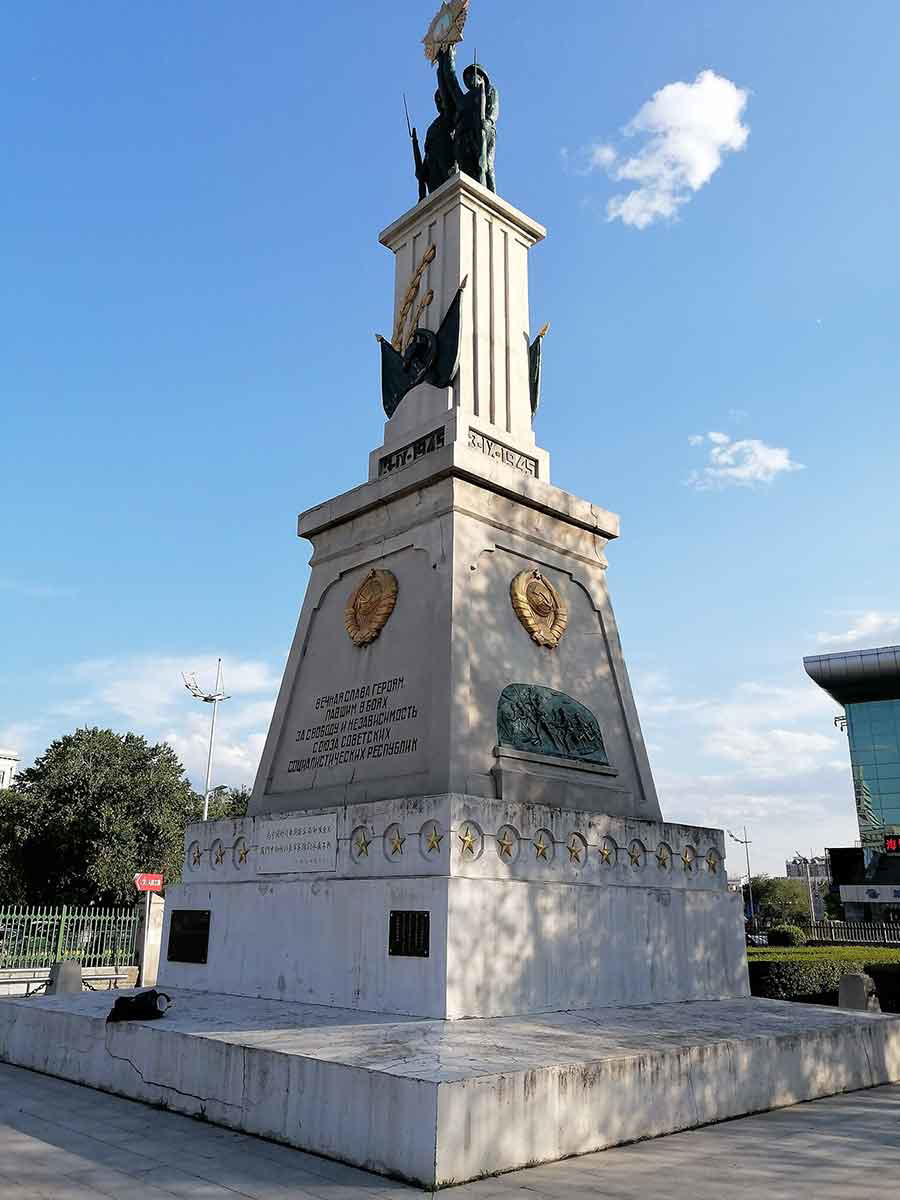
The Soviet Red Army Monument in Harbin was built in 1945 to commemorate soldiers of the Soviet Army who liberated Manchuria from Japanese Occupation during World War II. The Soviets entered the Pacific following the Tehran Conference of 1943 and the Yanta Conference of 1945. They began to invade Manchuria in August 1945, defeating the Japanese army. The Japanese at that time had established a puppet state, Manchukuo, in Manchuria, which was toppled when they were defeated. The command of the Soviet Red Army decided to build a monument in memory of those who lost their lives while liberating the region, and construction started that same month.
In the following decades, relations between China and the Soviet Union faltered, and many monuments commemorating the Soviet Red Army in Harbin were covered. When relations improved in the 1980s, the statues were uncovered and restored. The monument is now considered a cultural relic and was afforded protection by the government in 1995. Former Russian President Boris Yeltsin visited Harbin in 1997 and laid a wreath at the monument. In May 2024, Russian President Vladimir Putin also visited the monument, laying flowers at its base.
